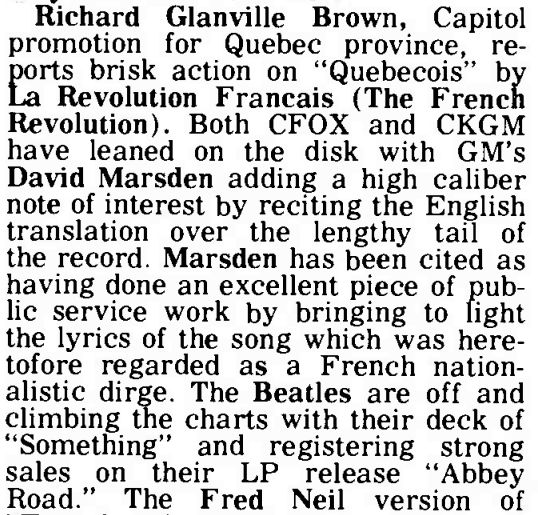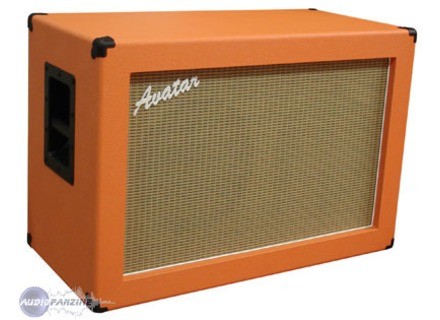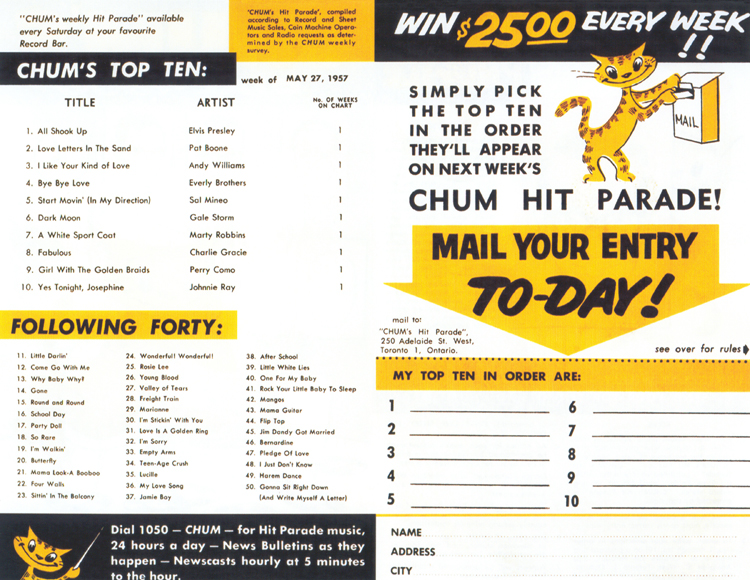- RadioActive
- Moderator
 Offline
Offline
Instant Replay: CHUM AM & FM In The 60s & 70s
In the past two weeks, we’ve been looking at CHUM both before and after its Top 40 success. But it was in the 60s when the station really made an impact. And after that, came FM.
Who Intro’d The Beatles At MLG?
Ask people who introduced The Beatles during their legendary first concert at Maple Leaf Gardens in 1964, and most will tell you Jungle Jay Nelson. But the Fab Four played two shows in one day during their first trip to T.O. – and Jay Nelson didn’t get the second honour. The answer as to who it was may surprise you, because CHUM seemed to own the entire thing.

A Skinner Winner
As the 60s progressed, so did music, and while Brian Skinner was notorious for churning out the hits, he also was interested in more progressive music as well, as this blurb from 1968 shows.

The Battle Of The Rock Docs
By the mid-60s, CKEY had given up challenging CHUM and outside of CKOC, 1050 had Top 40 almost solely to itself. Until around 1967, when Foster Hewitt’s CKFH tried to give them a run for their money. They battled each other for original ideas for nearly a decade, but sometimes they became too similar for either’s own good.

CKFH also had a wider playlist and that put pressure on the 1050 crew. More on that station next week. These are from 1969:



This Time, It’s “Personnel”
A lot of jocks passed through those hallowed doors over the years – and some left unhappy. Jackson Armstrong was angry about the Drake format and urged his fellow jocks to fight it. Not long after, the new style was in and Armstrong was out. He later placed an ad in a trade publication, hoping to become a P.D. Note the final sentence: “Rock ‘N Roll is not dying – the presentation is wrong!” Don't know if he ever got the gig he was looking for, but I would have loved to hear that station.

In 1969, a newcomer came to 1331 Yonge St. and didn’t leave for the next 50 years. He’s the guy replacing Brian Skinner.


From Classical To Classic Rock
In the beginning, CHUM FM could not have been more different than its AM counterpart. It signed on with a classical music format on Sept. 15, 1963.

By April 1969, CHUM could no longer ignore freeform radio and change was in the air – along with rumours.

The station tried to be first in many ways and that sometimes got them into trouble – especially around the Beatles.


There were some great announcers at the station, including many who left for other places and bigger futures.

Speaking of Marsden, he also made headlines during a stay in Montreal.

And finally a peek inside the CHUM Control Room, as it looked around 1976.

Next week: Legendary hockey broadcaster Foster Hewitt tries to score with his own radio station, CKFH.
- mace
- Member
 Offline
Offline
Re: Instant Replay: CHUM AM & FM In The 60s & 70s
I had always thought CHUM-FM made the switch from Classical to Progressive Rock on July 2, 1968 because CKFH had started to make some ratings improvements with The Open Lid.
- RadioActive
- Moderator
 Offline
Offline
Re: Instant Replay: CHUM AM & FM In The 60s & 70s
You are correct - CHUM-FM switched to progressive in 1968, although I'm not sure how much CKFH had to do with it. I think the article below is more about the possibility they would be changing their FM format to something else in 1969 - which of course, thankfully, never happened.
I would be curious to find out what those "rumours" were, where they started and what format, if anything, CHUM-FM was supposed to change to.
- •
- Radiowiz
- Member
 Offline
Offline 
Re: Instant Replay: CHUM AM & FM In The 60s & 70s
When did the 49% non hit rule take effect for FM?
Gone by the early 90's, but not forgotten as the CRTC's strong effort to protect AM radio.
- Doug Thompson
- Member
 Offline
Offline
Re: Instant Replay: CHUM AM & FM In The 60s & 70s
CHUM's Jay Nelson and CKEY's Al Boliska did indeed split MC gigs for the 2 shows of The Beatles at Maple Leaf Gardens in 1964, but Jay Nelson alone MC'd their concerts in '65 and '66.
As for CHUM's History of Rock. CHUM knew that CKFH had bought the rights to Drake-Chenault's "History of Rock and Roll", so we set about to beat them. We had about ten days to write and produce 28 hours. Larry Solway wrote it. He was definitely NOT a rock fan, but he gave it his best shot. I was Production Manager at the time and produced all 28 hours in one week on old mono equipment. J. Robert Wood hired Chuck RIley aka Chuck Dann from WIBC in Indianapolis to narrate it. Chuck flew in for a weekend and read Larry's script. At the time, we didn't have a lot of interview material, but we had some and I added that to the production as often as possible.
CHUM aired 4 hours of "The History of Rock" for 7 nights in the fall of '69 and repeated starting December 29h from 8 to midnight for 7 nights. I still have the original metal 10" master reels.
CHUM FM switched in 1968 because Mr. Waters saw the impact 'underground radio' was having in San Francisco and like in 1957 when he switched to Top 50 radio (it wasn't called Top 40 yet), he was ahead of his time. He even hired New York DJ Murray the K for the evening show, which lasted about 6 months. Murray was very cool. He brought his own producer from ad agency Young & Rubicam and his own Music Director, Bobby Calendar. CHUM FM PD Garry Ferrier assigned a young David Pritchard to be Murray's board op. David had been an op at 1050 CHUM and on air at CFGM prior to this gig.
And that CHUM AM master control photo was from 1976 or 77. In 67, we were still in the original production studio (which was through the glass on the right).
Last edited by Doug Thompson (May 27, 2019 12:41 am)
[img][IMG][/img][/img]
- RadioActive
- Moderator
 Offline
Offline
Re: Instant Replay: CHUM AM & FM In The 60s & 70s
Thanks again Doug. Always glad to hear the inside stories, especially about the duelling History of Rock specials. You must have moved into the production studio for days to get that done in time. I've put in some long sessions, but never anything like that!
Also, my source material indicated that CHUM pic was from 1967, but since you were there, I'd tend to trust your estimate. I've changed the copy to reflect it. Thanks again for the insight. I always learn something interesting about one of my favourite stations when you contribute.
- •
- mace
- Member
 Offline
Offline
Re: Instant Replay: CHUM AM & FM In The 60s & 70s
Radiowiz wrote:
When did the 49% non hit rule take effect for FM?
Gone by the early 90's, but not forgotten as the CRTC's strong effort to protect AM radio.
This rule was enacted in 1975, in the CRTC's words "to ensure that music programs on FM stations in Canada complimented rather than imitated AM" "Hit" songs could not make more than 50% of a stations playlist and could not be played more than 18 times per week. The CRTC used the Billboard Hot 100 to determine Hit/Non Hit status. I suppose any song that peaked between 41-100 could be considered non-hit status. The rule was abandoned sometime in 1997. Larry Leblanc wrote an historical article on this subject in the Nov 28, 1998 issue of Billboard.
- RadioActive
- Moderator
 Offline
Offline
Re: Instant Replay: CHUM AM & FM In The 60s & 70s
By the way, I just noticed today is May 27th, that infamous introduction date of CHUM as a Top 40 (50) station - 62 years ago today. That was a lifetime ago, but in some ways, it still seems like yesterday.
Here's that first ever Chart, courtesy Doug Thompson's CHUM Tribute site.
Last edited by RadioActive (May 27, 2019 9:49 am)
- •
- RadioActive
- Moderator
 Offline
Offline
Re: Instant Replay: CHUM AM & FM In The 60s & 70s
Hey Doug, if you're still checking in here, I've always been curious about the CHUM Chart.
Was it a single person's job to create this every week and was it a full time position or just a "we gotta get this out ASAP and move on to the next thing" type of job? Who decided what was on the cover and the back and who took the pics and drew the photos? How long did it take to gather the actual sales info and put the thing out? Was there any significance to what colour it was every week? (Sometimes green, sometimes blue, sometimes orange or yellow but rarely red.) Did they ever run into trouble getting it out in time? Who actually printed it and distributed it to the stores?
When the chart changed to a Top 30 version, it was a major redesign. Was this because of the switch to the Drake format? Who decided what the new slimmed down version would look like?
The chart was a major promotional item for the station and maybe more than anything else, became one of the key symbols of the CHUM legacy. I still have a few hundred of them upstairs, including some of the earlier ones I got as a kid when my older sister got married and moved out, leaving them behind for me. To me, they're like a living radio history book of an era I will always remember fondly.
- •
- Doug Thompson
- Member
 Offline
Offline
Re: Instant Replay: CHUM AM & FM In The 60s & 70s
Allan Slaight had the music librarians (Millie Moriak, Barb Sturino and later Sheila Conners) call Sam's downtown, A&A's and a couple of others for their best sellers of the week, so the chart could easily been manipulated by them. They also checked with Billboard Magazine to see what was happening in the U.S. (but CHUM very much went its own way) as well as listener requests. Slaight was a huge supporter of Canadian music (long before the Can Con rules) and played and charted many Canadian artists, such as Tommy Ambrose, Pat Hervey, Gord Lightfoot,(he wasn't Gordon yet), Sandy Selsie, Jack Scott, Ronnie Hawkins (an honorary Canadian and drinking buddy of many CHUM DJ's of that era, Douglas Rankine (That "Clear The Track" Eddie Shack song) and quite a few more.
When Bob McAdorey became Music Director, same thing happened although there were, apparently, a few anomalies, shall we say. Roger Ashby still wants to know how "Bowling Green" by The Everly Brothers got to be number one on the CHUM chart, when it wasn't a major hit anywhere else.
The final CHUM Top 50 CHUM chart was July 28, 1968. The following week The CHUM 30 appeared. U.S. based consultant (although he later came to live in Canada permanently) Ted Randal and Program DIrector J. Robert Wood tightened up the sound and the chart.
Many weeks, CHUM was printing and distributing over 100,000 copies of the personal CHUM chart, which was costing a lot of money, which is why in 1975, they switched to the newspaper chart.
Last edited by Doug Thompson (May 27, 2019 11:59 am)
[img][IMG][/img][/img]
- RadioActive
- Moderator
 Offline
Offline
Re: Instant Replay: CHUM AM & FM In The 60s & 70s
Doug Thompson wrote:
Allan Slaight had the music librarians (Millie Moriak, Barb Sturino and later Sheila Conners) call Sam's downtown, A&A's and a couple of others for their best sellers of the week, so the chart could easily been manipulated by them. They also checked with Billboard Magazine to see what was happening in the U.S. (but CHUM very much went its own way) as well as listener requests. Slaight was a huge supporter of Canadian music (long before the Can Con rules) and played and charted many Canadian artists, such as Tommy Ambrose, Pat Hervey, Gord Lightfoot,(he wasn't Gordon yet), Sandy Selsie, Jack Scott, Ronnie Hawkins (an honorary Canadian and drinking buddy of many CHUM DJ's of that era, Douglas Rankine (That "Clear The Track" Eddie Shack song) and quite a few more.
When Bob McAdorey became Music Director, same thing happened although there were, apparently, a few anomalies, shall we say. Roger Ashby still wants to know how "Bowling Green" by The Everly Brothers got to be number one on the CHUM chart, when it wasn't a major hit anywhere else.
The final CHUM Top 50 CHUM chart was July 28, 1968. The following week The CHUM 30 appeared. U.S. based consultant (although he later came to live in Canada permanently) Ted Randal and Program DIrector J. Robert Wood tightened up the sound and the chart.
Many weeks, CHUM was printing and distributing over 100,000 copies of the personal CHUM chart, which was costing a lot of money, which is why in 1975, they switched to the newspaper chart.
So it sounds like it was quite a weekly undertaking. Well worth it, although I always preferred the extra space provided on the Top 50 chart as opposed to the 30 that came after it.
I remember Ted Randal. Didn't he wind up working at CFTR/CHFI in the 80s?
Anyway, appreciate the inside info. I envy you being a big part of that history. Must have been an interesting place to work in those heady days.
- •
- mace
- Member
 Offline
Offline
Re: Instant Replay: CHUM AM & FM In The 60s & 70s
April 26, 1975 was the last of the personal copy CHUM Charts. I have one of the Jumbo record store charts for June 7,1986 which was the last published chart. I have heard that there was a chart prepared, but never published for June 14. Any truth to that?
- Doug Thompson
- Member
 Offline
Offline
Re: Instant Replay: CHUM AM & FM In The 60s & 70s
Calhame...everyone gets this wrong. It was a Top 50 format, but for some reason, it became known as Top 40 radio. The CHUM chart had 50 songs every week until July 28, 1968.
I believe there was a final final chart prepared but I've never seen it and I don't have a copy in the CHUM Archives.
[img][IMG][/img][/img]
- Fitz
- Member
 Offline
Offline 
Re: Instant Replay: CHUM AM & FM In The 60s & 70s
Doug Thompson wrote:
When Bob McAdorey became Music Director, same thing happened although there were, apparently, a few anomalies, shall we say. Roger Ashby still wants to know how "Bowling Green" by The Everly Brothers got to be number one on the CHUM chart, when it wasn't a major hit anywhere else.
An even more extreme example of a non US hit making it big on the CHUM chart was Dinio, Desi and Billy's "If You're Thinkin. Made it to number two in early 1967 but did not register on Billboard. Bowling Green at least made it to all the way to number 40.
Cool Airchecks and More:
 1 of 1
1 of 1